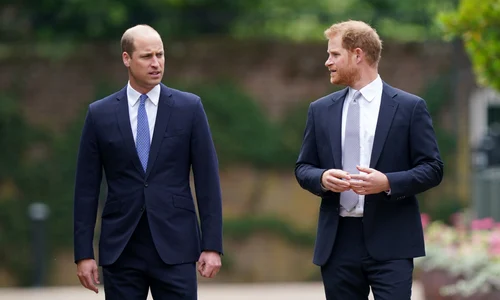
A short history of the Romanian monarchy
May 10th, 1866. German prince Carol of Hohenzollern-Sigmaringen, who had just recently arrived in Romania, was taking his oath in front of the Parliament:‘I swear to be faithful to the country’s laws, to maintain Romania’s religion, as well as her territory’s integrity, and to rule as a constitutional monarch.’ 15 years later, Carol would become King, establishing the rule of the Hohenzollern-Sigmaringen dynasty that will reign Romania until the communist takeover.
The story of how Carol, a prince of the German Empire, ended up in a little country by the Danube, is well known. After the forced abdication of Alexandru Ioan Cuza, in February 1866, the Romanian politicians started to look for the appropriate candidate to replace him. The main political groups, the liberals and the conservatives, agreed that the best solution would be bringing a foreign prince, in order to maintain the country’s stability and the 1856 Union.
The first King:Carol I
After the first candidate contacted by liberal leaders Ion Brătianu and C.A. Rosetti, Philip of Flanders, refused the throne, young Carol of Hohenzollern-Sigmaringen accepts the opportunity, with the blessing of Chancellor Bismarck and the King of Prussia.
Together with a new prince, Romania also received a new Constitution. The fundamental law adopted in June 1866 made Carol a ruler with quite limited prerogatives, similar to those of a constitutional monarch. The German prince found it hard to accommodate with the realities of Romanian society, so different from his native one, but in time, he will manage to blend in, becoming a key-element of Romania’s modernization.
At first, Prince Carol was not welcomed by all Romanians. His being foreign and, on top of that, German (Romanians are, by tradition, Francophiles), and the mistakes he made in his first years, characterized by political instability, made it hard for Carol to gain sympathy from his adoptive people. However, Carol’s image will improve significantly during the Independence War against the Ottoman Empire. Not only was Carol closely involved in the political mechanisms of obtaining his country’s independence, but he also personally led the army in battle, playing a crucial role in defeating the Turks.
After the independence, in 1881 the Romanian Parliament proclaimed the country’s transformation into a Kingdom, and Prince Carol becomes the first King of Romania.
Because Carol and his wife, Elisabeth of Wied, only had one child, a daughter who died at the age of 4 in 1874, the throne’s succession had to be settled by choosing an heir from Carol’s male relatives. Ferdinand, son of Leopold of Hohenzollern-Sigmaringen, Carol’s brother, is thus named heir apparent in 1889. 4 years later, he will marry British princess Marie of Edinburgh, Queen Victoria’s granddaughter, and the couple will have 6 children (Carol, Nicolae, Elisabeta, Maria, Ileana and Mircea).
Until the end of his long reign (48 years, the longest in Romanian history), King Carol succeeds in securing the monarchy’s image, as well the Royal Family’s, thereby guaranteeing the political stability essential to the country’s development. Carol will find himself in the middle of a final controversy, a little while before his death, in the eve of World War I.
Influenced by his German origins, but also by the idea of maintain his honour and respecting an alliance he had made in secret, Carol would have wanted Romania to fight along the Central Powers. But Romanian sympathies lied with the Entente and at that moment, in the summer of 1914, the people felt that their King was no longer on their side. At the Crown Council held at PeleșCastle in august 1914, Carol expressed his desire that Romania enter the war together with Germany. Confronted with his advisers’ opposition and aware that the majority of Romanians doesn’t agree with him, Carol accepted a policy of neutrality.
Only 2 months later, on September 27th/October 10th, Carol, old and overwhelmed by the tragedy of war, dies at age 75. He is succeeded by Ferdinand, his nephew.
A weaker king, but with great accomplishments
Ferdinand’s rule starts at a troubled time for Romania. The European war had just started and, in a little while, it became obvious that it will last longer than anyone had thought. Romania had chosen the path of neutrality, but everyone – the king, the politicians and the population – knew this was only a temporary solution and that there will come a time when Romania will be forced to join one side or the other.
Like his uncle, Ferdinand could also be influenced by his German origins. But unlike Carol, whose wife was also German, Ferdinand wasn’t only under popular pressure, but also under his wife’s pressure. English Marie was an active supporter of the Entente and she was sure the Allied Powers would win the war.
In the end, in the summer of 1916, Ferdinand declares war on his country of origin and joins the War alongside France, England and Russia, in the hope that this Alliance will bring the much-desired union with Transylvania, then a province of the Austrian-Hungarian Empire. Of the Crown Council in 1916, Ferdinand wrote:
‘I had to silence my heart;this hasn’t been easy;with a tortured soul I have decided to fulfill my duty to the Romanian people, whose destinies I rule. With pain, but confident that this decision is the only one that is in concord with the destiny of my country, Romania.’
Despite that, in the first months of 1918, Germany appeared to be headed towards victory, after signing a separate peace with Russia, by December, Romania becomes Greater Romania, after a union not only with Transylvania, but with Bukovina and Bessarabia. It was an unforeseeable result that few would have predicted in 1914. And so, in 1922, Ferdinand ‘the Loyal’, as he will be called due to his choice in 1916, and Marie will be officially crowned King and Queen of Greater Romania.
The rest of Ferdinand’s reign will be marked by the challenges brought by a greater state. The most important moment will be adopting a new Constitution, in 1923, that will offer a legislative framework appropriate for the country’s further development.
After the war, Ferdinand, having a completely different personality than his uncle, will be greatly influenced by the energetic Ion I.C. Brătianu, leader of the National Liberal Party. The king’s close ties with the liberals will bring numerous critics from the other political parties, especially the National Peasants’ Party. Fate had it that the two leaders of Romania, King Ferdinand and Ion I.C. Brătianu, died in the same year, 1927, only a few months apart, leaving the country in front of new challenges.
Carol II, a controversial king
Following Ferdinand’s death, the throne was meant to go to his eldest son, Carol. He had made quite an image of himself from an early age, because of his controversial personality and his many flings. In 1918, young Carol secretly wed Zizi Lambrino, daughter of a Romanian general. The marriage, which resulted in the birth a boy in 1919, was quickly annulled, and Carol, pressured by his parents, will eventually marry Greek princess Elena. In 1921, a boy, Mihai, will be born.
Carol’s adventures did not end here. In the 1920’, he begins an affair with socialite Elena Lupescu, for whom he ends up renouncing the throne. In 1925, Carol moves to Paris with his mistress, and in January 1926, through an act of Parliament, his son Mihai becomes heir apparent.
This is how Mihai, at the early age of 6, accedes to the throne in 1927, after the death of his grandfather. According to the law, a regency was to handle the royal prerogatives and rule until the young king reached maturity.
Considering the negative effects (in terms of political stability) of a long regency, certain politicians will soon start to ‘woo’ exiled prince Carol, trying to get him back on the throne. The plan will become reality in June 1930, when Carol returns to Romania and is proclaimed king (June 8th).
Unlike his father, Carol II had no intention of ruling like a constitutional monarch, acting only as a balancing factor in the internal politics. Carol wanted to be an actively involved king, with greater prerogatives. As such, his reign will be characterized by a significant economic development, but also by a chronic political instability caused by a rise of monarchical authority, a weakening of the political parties and an advance of the extreme-wing parties.
Carol II also becomes the center of Romania’s first (but surely not the last) personality cult.
Carol’s aggressive campaign against the democratic system comes to an end in 1938, when he establishes a new type of regime, as an authoritarian monarch. The 1923 Constitution is replaced by one that gives the king more power. So Carol II succeeds in his plans of becoming a king that governs, not only reigns, but he did so by acting against his country’s best interests. His prestige will fall dramatically and this fact will have severe consequences in 1939-1940, when Romania falls prey to international pressures.
The fall of Greater Romania and the last years of the monarchy
The fall of Greater Romania, in the summer of 1940, through the forced surrender of Bessarabia, Northern Bukovina, Transylvania and southern Dobrudja, will put an end to Carol II’s reign. He could never have survived the political disaster for which he was responsible. On September 6th, he is forced to abdicate by general Ion Antonescu, and the throne goes to Mihai. Carol will once again leave in exile with Elena Lupescu, but this time he will never return. He will die in exile, in Portugal, in 1953.
At the beginning of his second reign, Mihai was 19 years old. And like the first time, he will be kept away from the political affairs. The same day he is proclaimed king, Mihai signs a decree giving general Antonescu full powers to govern the country.
During Antonescu’s rule, young King Mihai will be kept away from the political affairs, including the crucial decision to join the war alongside Nazi Germany. Antonescu believed Mihai was nothing more than an inexperienced child who shouldn’t play any part in governing the state, especially in time of war.
‘Until the king matures with age and mind to understand the problems of state, no one is to bring to him any problem and anyone, of any position [who does so], will be dismissed by me. No one will walk in front of the Palace for any other reason than to bow in front of symbol. He [the King] is merely a symbol and has no right to be involved in ruling the state.’
Despite being left out of the decision to go to war, King Mihai will support the decision to fight against the USSR to get back Bessarabia. This is why he agrees to travel to the front, to encourage the soldiers. However, later on, the king will distance himself from Antonescu and condemns his decision to continue fighting with the Germans. After the disaster at Stalingrad, that marks the first moment in which the German victory stopped appearing as certain, king Mihai and the main opposition leaders will start considering removing Antonescu from power.
The king played a crucial role in the coup d’étatthat removed the Antonescu government from power. After that, Mihai struggled to reinstate a democratic rule in Romania, but was confronted with a strong pressure from a new political actor:the Communist Party.
If, until then, the Communist Party of Romania had played a minor role because of its small number of members, after august 1944, it received a tremendous help from the Red Army and Moscow. As such, Mihai couldn’t stop the communists’ rise to power. He was forced to accept their involvement in politics, by including them in the Sănătescu and Rădescu administrations and then, in March 1945, by naming Petru Groza prime minister.
Abdication and exile
After 1945, as Romania is forcibly drawn into Moscow’s sphere of influence, king Mihai tried his best to keep the democracy regime standing. But he will be overwhelmed:despite his efforts to resist communist pressures and obtain some kind of support from the Western Allies, king Mihai won’t be able to stop Romania’s communization. In the end, in December 1947, he is forced to abdicate and leave the country.
And so the long exile of King Mihai begins. In 1948, he will marry Princess Anne of Borubon-Parma, who gives him 5 daughters:Margareta, Elena, Irina, Sofia and Maria. The king will divide himself between his family life and the efforts to maintain Romania’s cause alive. Over the years, he keeps in touch with other Romanians in exile and never stops to promote his country’s interests.
After the fall of communism, King Mihai tried to return to Romania on December 25th, 1990;he wished to go to Curtea de Argeș, to visit his family’s tomb. The following incident is still quite controversial:after he received a visa at the airport, the king is stopped on the highway by a police patrol and, without reasonable explanations, he is forced to go back to the airport and leave the country. He returns 2 years later, at Easter, and receives an impressive warm welcome. Worried by Mihai’s surprising popularity, president Iliescu’s government forbids him to return to Romania. It is only in 1997, after Emil Constantinescu is elected president, that Mihai regains his visa and Romanian citizenship and is allowed to return.
















